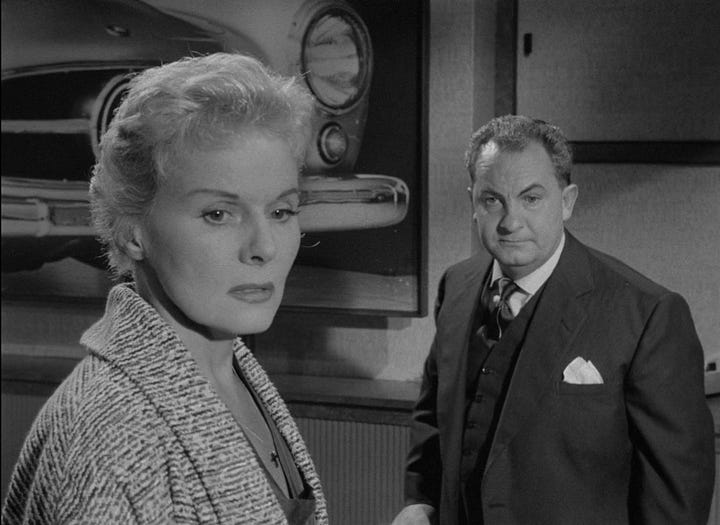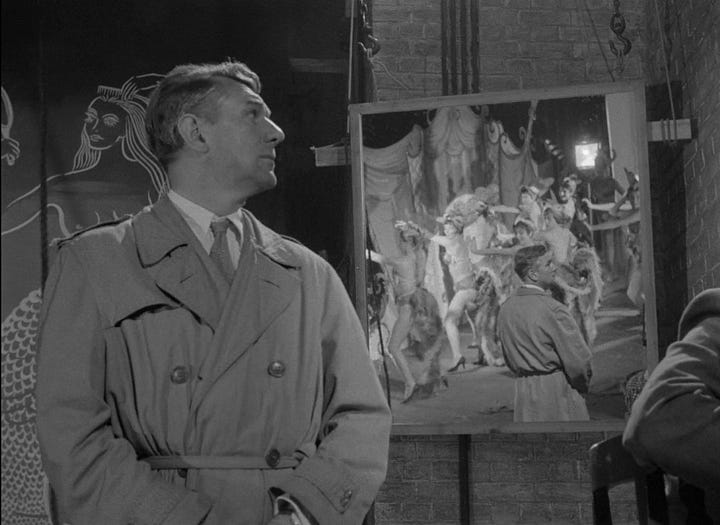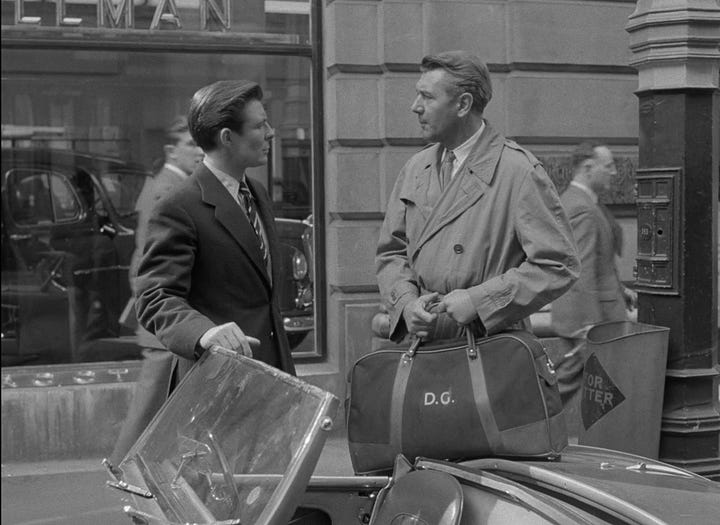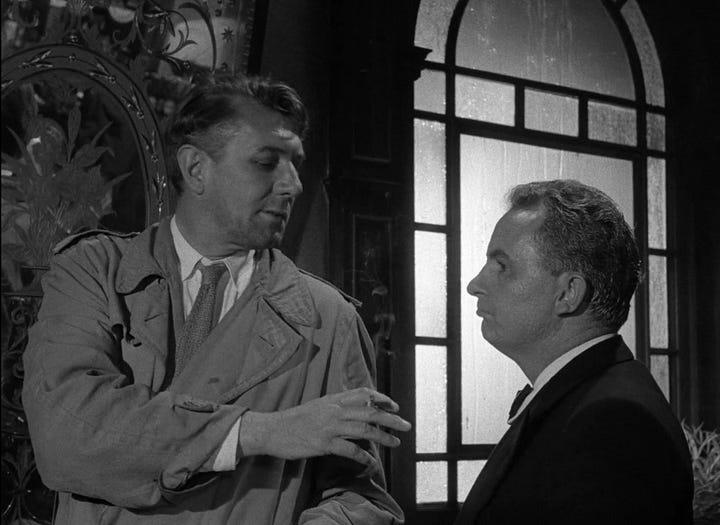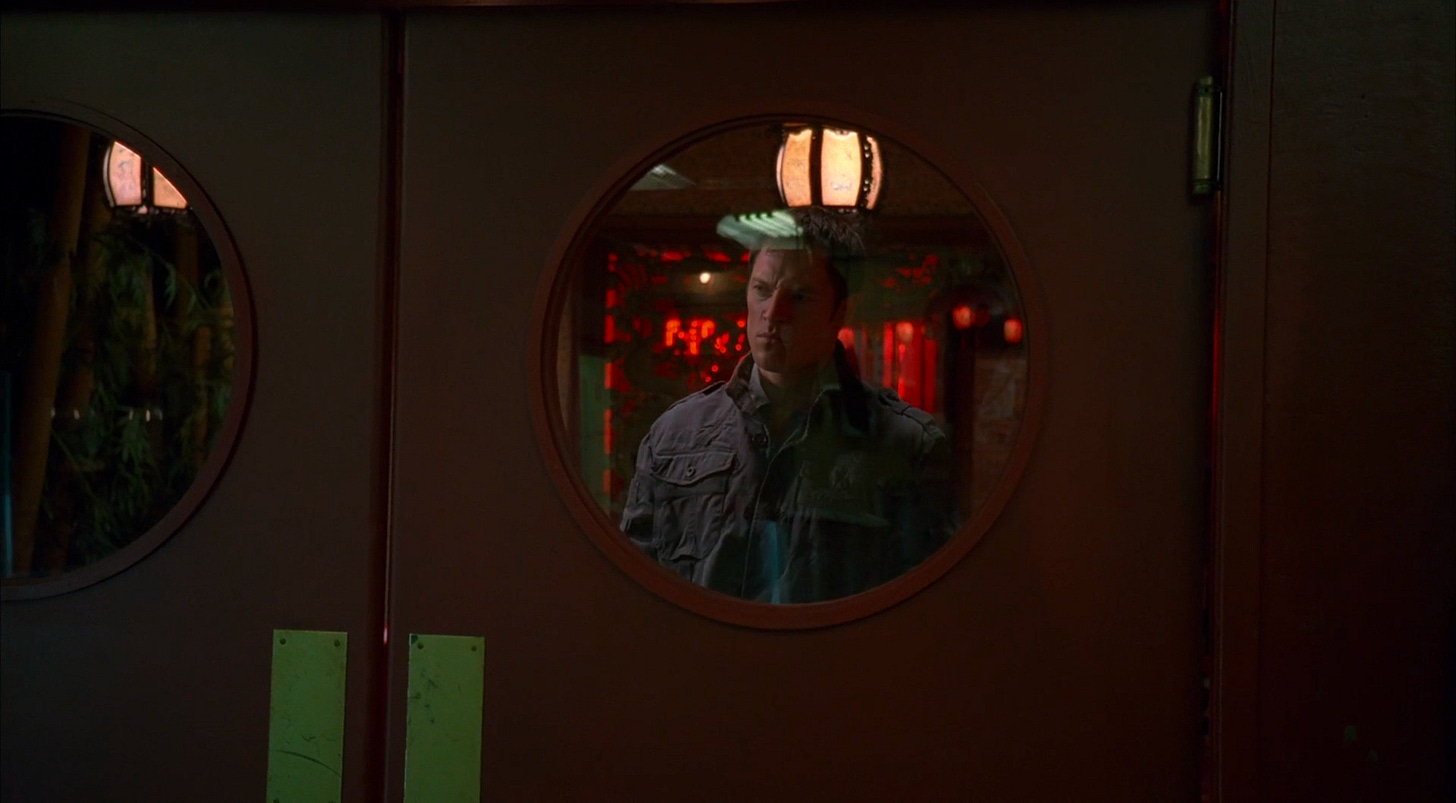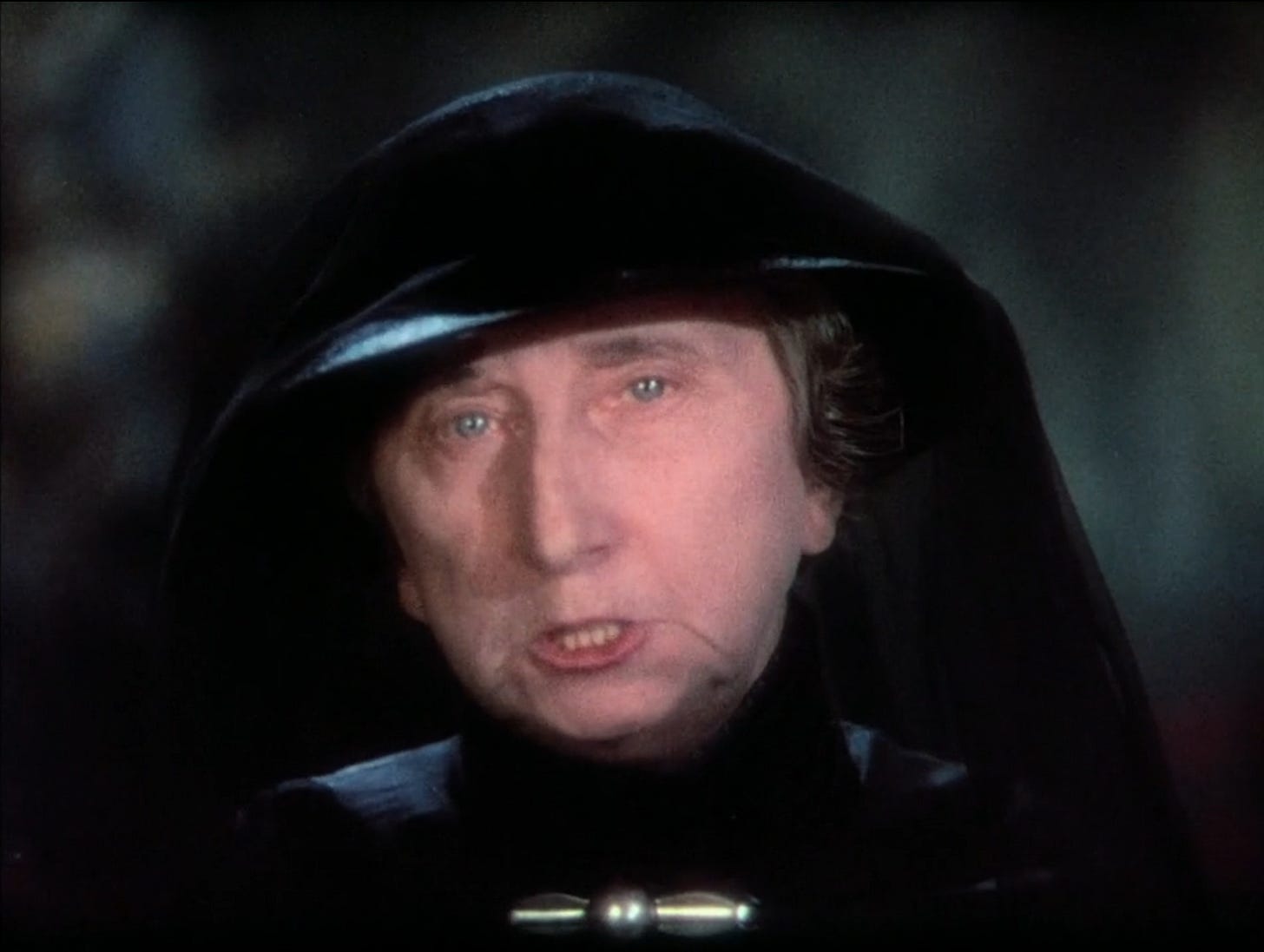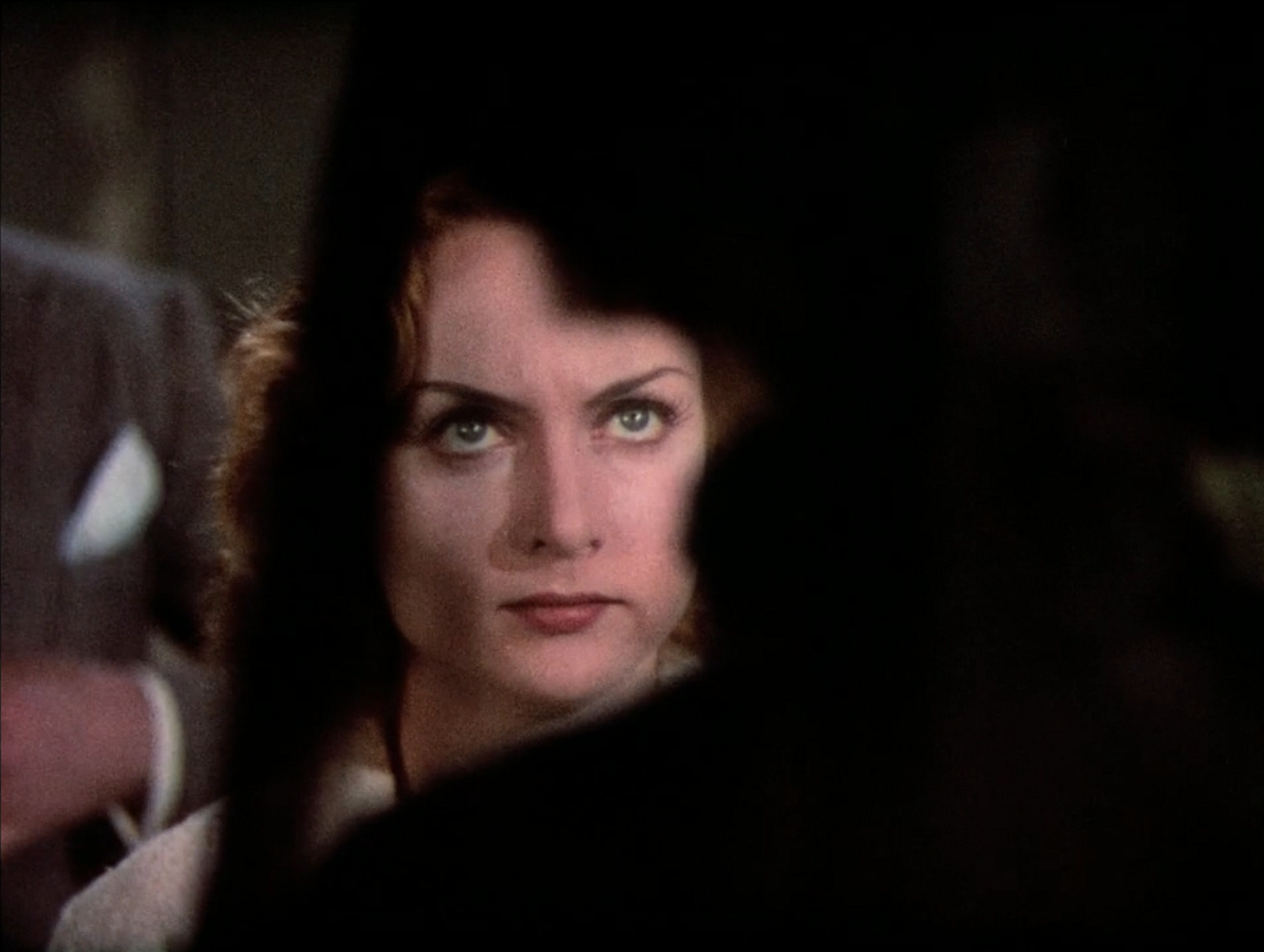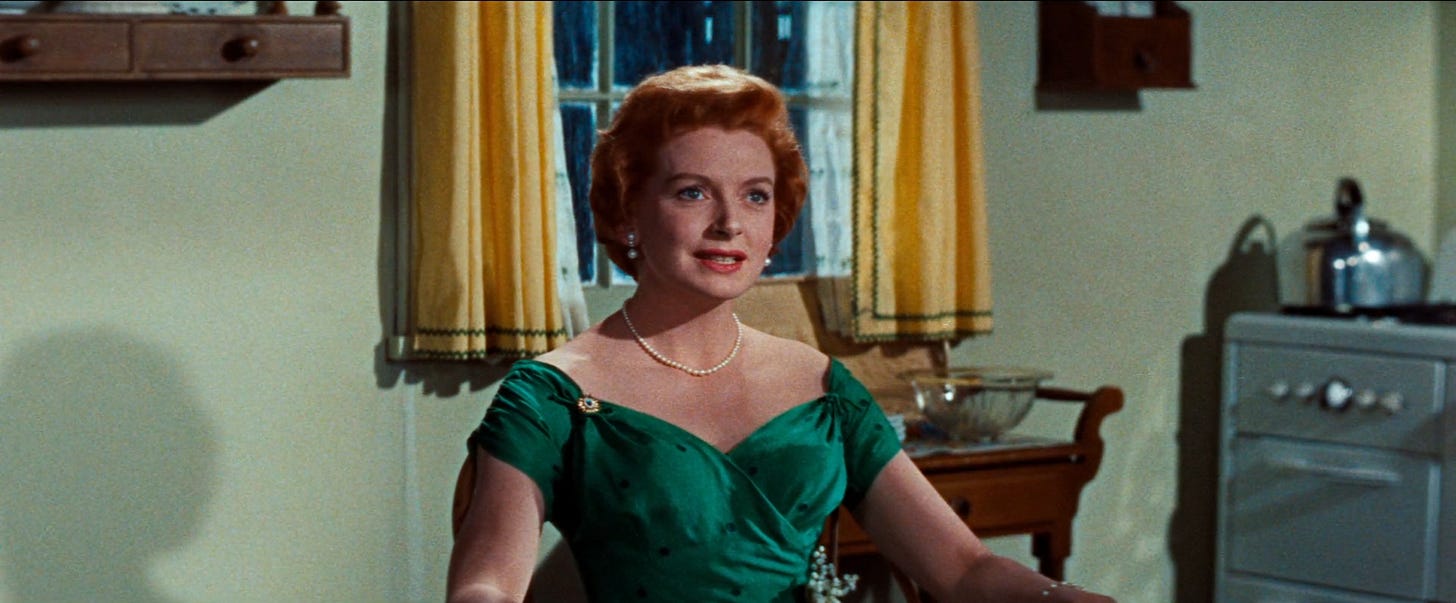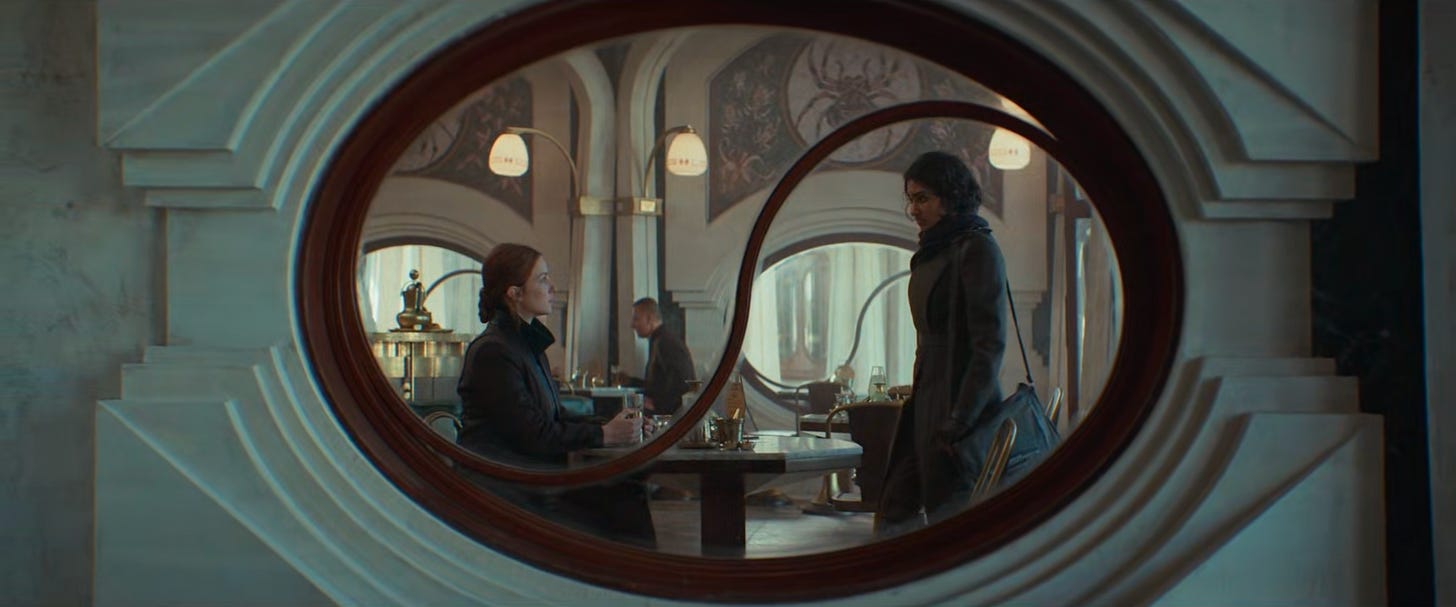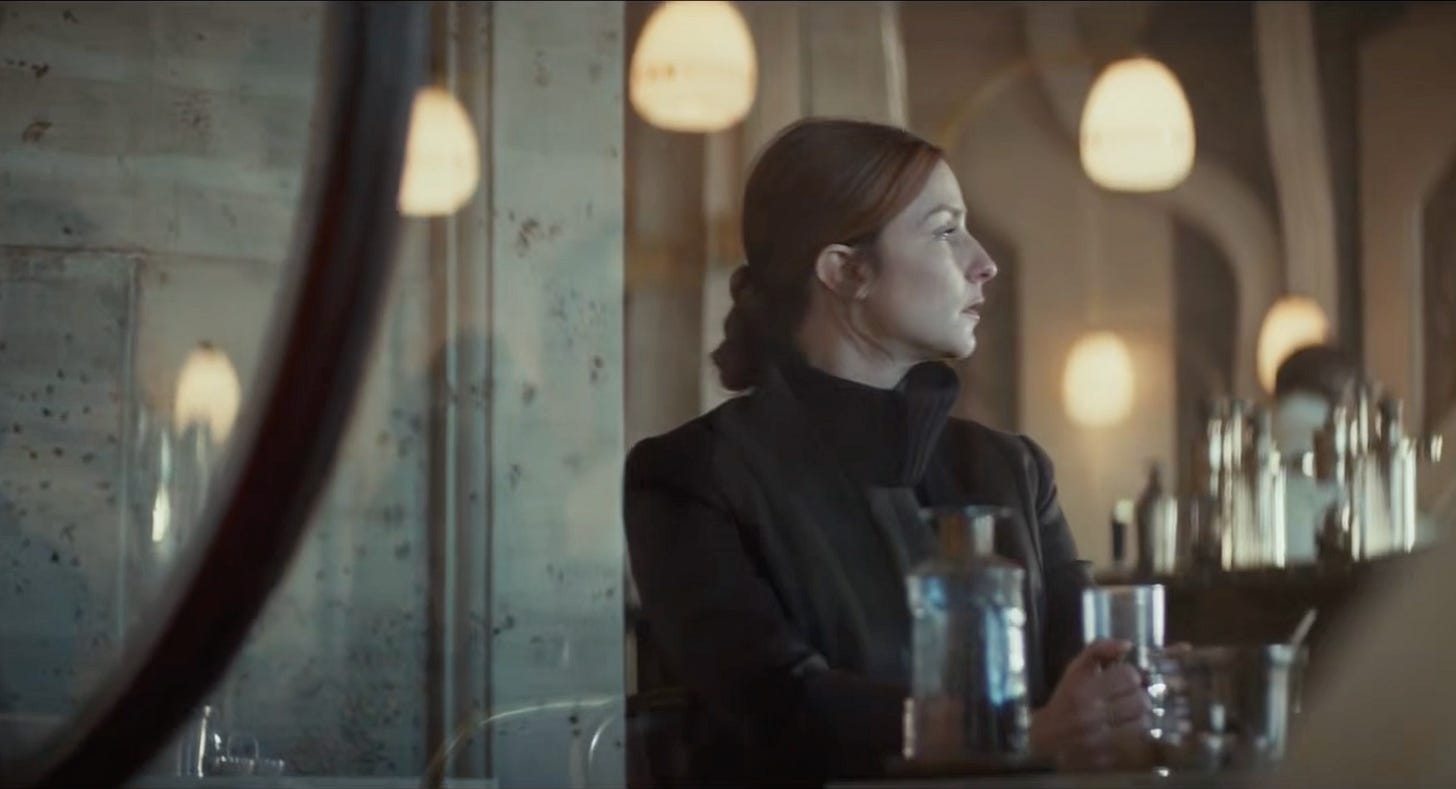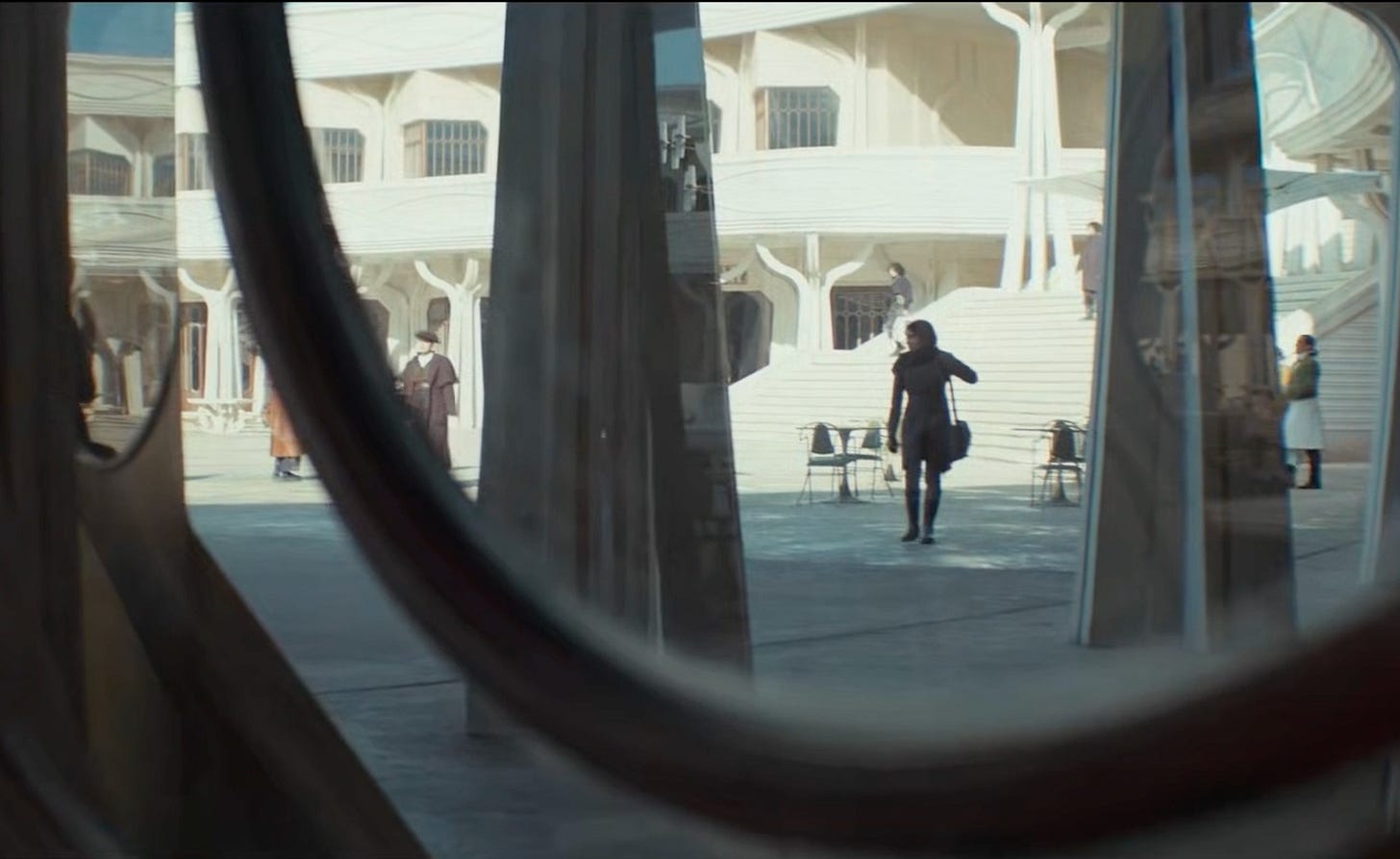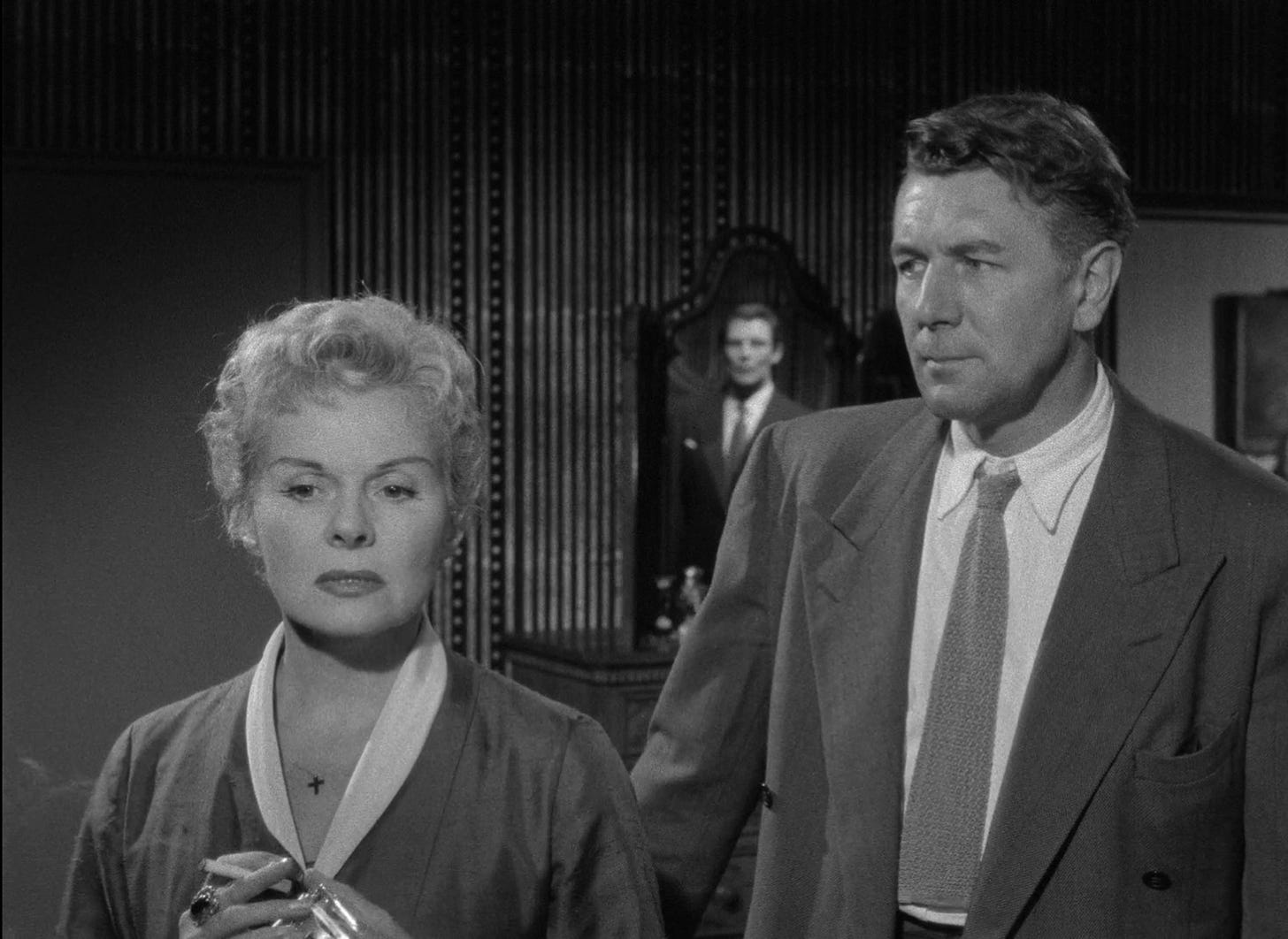Week 25.37 - Socials Roundup
08 Sept - 14 Sept 2025: (Frames Within Frames) Dollhouse, Andor, Tea and Sympathy, Time Without Pity, Nothing Sacred
Week 25.37 posts are all about Frames Within Frames, including shots from Dollhouse (2009-2010); Andor (2022-2025); Tea and Sympathy (1956); Time Without Pity (1957); and Nothing Sacred (1937).
Dollhouse
This shot from Episode 1.06 “Man on the Street” is a nice use of red and green ‘opposite on the wheel’ colours.
The porthole window also shows us something important; as Paul (Tahmoh Penikett) searches the restaurant, he’s unable to see who may be hiding in the kitchen . . .
Nothing Sacred
A creative and unusual frame-within-a-frame shot from the first ever Technicolor comedy film!
When a furious, prudish woman confronts Hazel (Carole Lombard), we see the woman’s elaborate black hat from Hazel’s POV.
When the shot flips around, the drapes of the woman’s hat create an “Iris Shot” effect* which concentrates our attention on Hazel’s expression.
*an Iris Shot or as I (Mel) often call it “The Looney Tunes vanity card shot” was a common technique in silent films, which is where Lombard got her start.
Tea and Sympathy
This film uses frames-within-frames to very meaningful ends . . . but not every use of a frame-within-a-frame needs to be A Big Significant Thing!
Sometimes, it simply looks pretty, and/or draws our attention to a character or item, like the way the curtains here create almost a minor picture frame around Laura (Deborah Kerr).
Andor
This frame of Vel (Faye Marsay) and Cinta (Varada Sethu) isn’t just stunning, it encapsulates much of their dynamic of Season 1 — the last time we actually saw them share a frame (they saw each other in episode 2.01, but never shared a frame).
Throughout Season 1 Vel and Cinta had similar ideals, but struggled to reconcile their relationship with the Rebellion, coming to opposite conclusion of how to achieve their ideals; and this frame reminds us of all this visually. Even if you hadn’t seen Season 1, this frame hints these two characters are in many ways ‘the same but different.’
I’m also interested in how we get into this frame, though:
The scene starts with a shot of Vel, with the window not fully in frame, but clearly established (and as we’ve seen this restaurant in other scenes through the season, we’re aware what it looks like and where we are).
Then after Vel looks through the window we get her POV, with the window’s distinguishing frame still clearly within the whole shot; this shot establishes Cinta, walking Right to Left.
Finally, the camera follows Cinta into the shot, moving Right-to-Left; it doesn’t hold on the window anticipating her, but tracks with her movement and lets that lead into completing the yin/yang shot.
Time Without Pity
The above two examples make their smaller frames within a wide frame, but you can easily use this technique within a more square frame as well, as Time Without Pity does again and again — for example using all these literal frames of windows, pictures, mirrors, and car windshields within the set dressing.
